Categories
Latest Updates
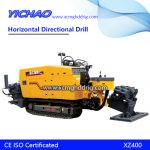
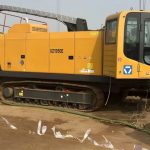
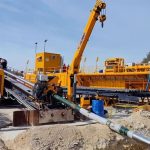
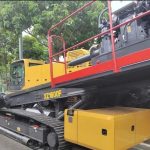
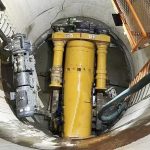
The point CIPP repair technology is similar to the in-situ curing pipeline repair technology (CIPP), and also uses the same or similar materials. It is mainly used to repair partially damaged pipelines and has been applied for more than 30 years.
During construction, the short liner is wrapped on an expandable roller and pulled into the site to be repaired with a winch. Then use compressed air to expand the roller to fit tightly with the old tube. After the resin is cured (it can be cured at room temperature, or the curing process can be accelerated with hot water or steam), release the compressed air to shrink and retract the roller.
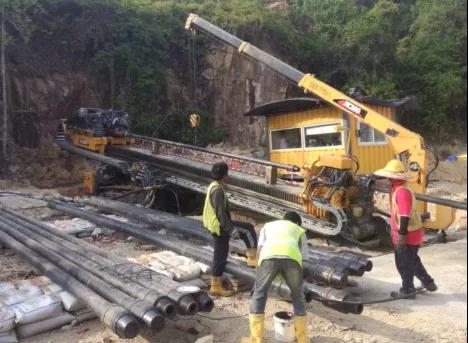
Pipeline section pull back in this trenchless project
The point-like CIPP repair technique consists of a reinforcing liner consisting of two layers of glass fiber braided roving and a polyester layer between them. stitched together. The liner is cut on site and soaked with epoxy to accommodate the special requirements of the old pipe. The lining material absorbs sufficient resin, and when the lining is compressed, the resin can fill the uneven pipe wall and seal the cracks, so a good sealing layer can be formed between the old pipe and the lining.
The repaired pipe diameter range is 50~1500mm, the maximum repair length is 15m, and the widely used repair length is 1~4.5m. The minimum thickness of the lining is generally 3mm (1/8in) and the maximum thickness is generally 9.5mm (3/8in). Thicker linings can be used for repair works in special cases.
The resin curing time is generally 1~4h, which is related to the type of resin used and the diameter of the pipe. Standard CIPP liners and resin materials are often used for spot CIPP repairs in many in-situ curing projects. After the resin has cured, the liner can withstand an external water pressure of 200kPa (30psi), depending on the design requirements.
Most point-shaped CIPP techniques are limited to soaking the braided liner with a suitable resin, wrapping it on the expandable drum, pulling it into the position to be repaired, and then filling the drum with water, steam or air, and pressurizing it to make it close to the old. on the pipe wall, followed by resin curing. Heating curing system can be used, and room temperature curing system can also be used. Although the point CIPP is regarded as a short repair, the strength of the braided liner and the resin material is relatively high. Compared with all new pipes, the material economy is better. The commonly used material for the liner is polyester needle felt (not braided) , Glass fiber can be mixed into the liner material or a layer of glass fiber can be added to the multi-layer structure liner used in some repair systems. The glass fiber can improve the strength, and the felt can carry the resin.
Although polyester resins can be used as full-length liners, epoxy resins are often used for local repair techniques. Epoxy resins are insoluble in water, whereas polyester resins are affected by water before curing. This is especially technically relevant, where no cut-off flow is required when designing the laying of the liner. The disadvantage of epoxy resin is mainly that the cost is too high, and the requirements for curing conditions are relatively strict. Many epoxy-based repair systems require heat to cure, while polyester resins generally cure at room temperature.
The repaired liner can be round or rectangular, the latter is wrapped on the expandable drum, and when the drum is expanded, it can be rolled out and attached to the wall of the old pipe. When the rectangular liner is repaired, a certain overlap length is required for the joint part, but this does not have much influence on the repair effect.
Resin soaking of braided liners can be performed on-site or pre-soaked at the factory and shipped to the restoration site. Soaking is generally performed on-site and should be handled with care to avoid sanitation risks and chemical spills. It is important to seal the resin as much as possible when mixing and immersing it. Mixing air will cause damage to the material. If too much air is mixed, the resin will contain more pores after curing. However, it is impossible to completely avoid air mixing, especially when using viscous resin, so some repair systems use vacuum immersion technology to avoid air mixing as much as possible.
Whether it is a heat curing system or a room temperature curing system, it is basically required to limit the temperature increase of the material before the expansion of the drum. Elevated temperatures may cause curing to proceed prematurely, and the material will harden before the liner is in place, defeating the purpose of repair. Once the resin material has been mixed, an exothermic curing action will begin and the temperature of the material will increase. The resin should be used immediately after mixing, do not leave it in the container. The surface temperature of the material should also be paid attention to during soaking. After soaking, the liner should be quickly dragged into place, and the drum expansion should be performed immediately.
Rollers are generally elastic materials, such as rubber. The internal pressure first expands the drum and then squeezes the liner against the old tube. Most of the room temperature curing systems use compressed air to form the expansion effect, and the heating curing system uses a mixture of air and steam, or uses hot water, and the heating medium circulates back and forth between the drum and the heating equipment on the ground. It should be noted that if the pressure is not too large, especially in the hot water expansion system, the drum is subjected to both hydrostatic pressure and pump pressure.
The curing time is related to the resin formulation, the thickness of the liner, the temperature in the drum (heat curing system), and the wall temperature of the old pipe. The high groundwater level may form an endothermic source and reduce the temperature of the outer surface of the liner, so that the curing time will be prolonged. After curing, shrink the roller and retract it. Inspect the liner and perform branch reconnection work.
